The final (usually level-diameter) section of either nylon or fluorocarbon line that connects your “leader” to your fly (or flies)
This is probably the shortest answer, There are some details to add to this– not least addressing the question “what is your leader then?”. The rest of this article fills in those gaps.
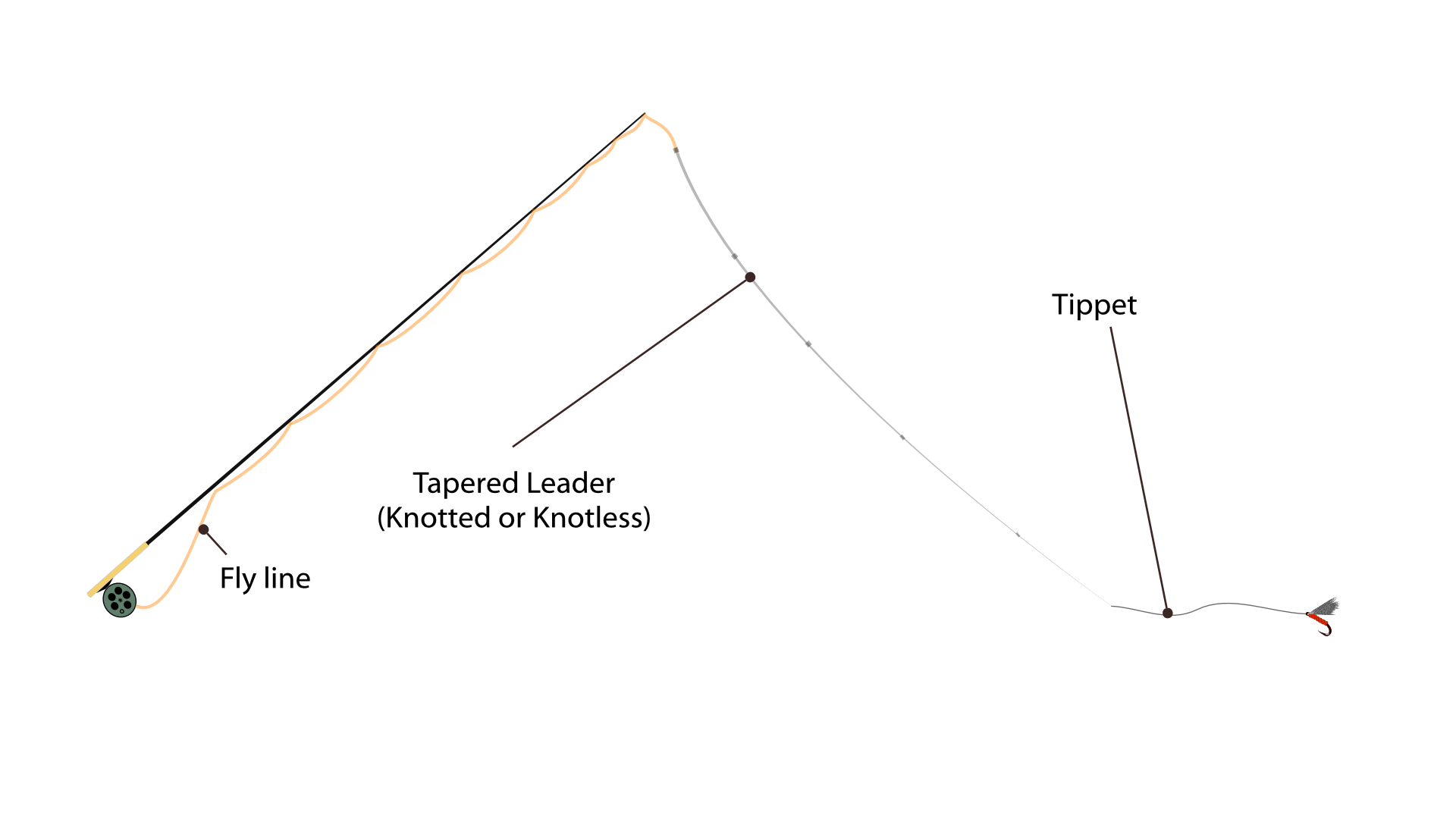
Filling in the Details on What is Fly Fishing Tippet?
These details can vary a bit across different styles of fly fishing – from stillwater to river to saltwater (flats and open ocean). We have a lot of content to help with your wider fly fishing skills. However, when it comes to fly fishing tippet, many of the same principles apply across different fishing situations; it is just that the strength of the tippet, leader, rods and line might vary.
Let’s tackle leaders first…
Fly fishing leader
Knowing how to separate what is a "leader" from what is fly fishing tippet is the key distinction here:
In the strictest sense, your “leader” in a fly fishing rig is the section of line that attaches to the tip of the fly line. Its ultimate function is to transmit the momentum from your fly line as it unrolls and straightens so that your fly (or flies) land exactly as you want them to. For this reason, leaders vary in their taper, thickness, stiffness, construction material and construction method.
A short-hand way of saying this is that your leader creates a characteristic “turnover” of your flies.
The subject of leaders in fly fishing deserves its own article (if not its own book!).
To keep things really confusing, your leader and your tippet might be the same thing for certain fishing styles! For instance, this is a common situation in a lot of UK stillwater fly fishing – where you knot level tippet material directly to the end of your fly line. This can sometimes be true in saltwater fly fishing too. Arguably, this is also what happens when you are fishing nymphs using a Spanish Leader.
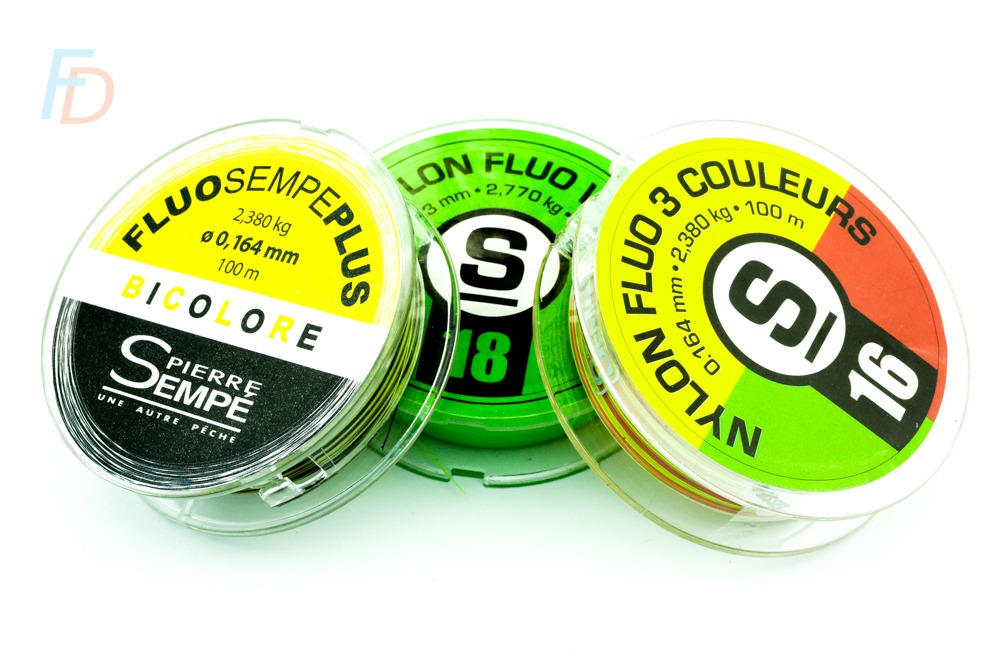
One example of where "tippet" is also "leader" - Colored nylon used in Spanish nymphing
Hopefully, you can see how it is difficult to come up with a single, simple answer to the question of What is Fly Fishing Tippet? ...
Buying Tippet: What is Fly Fishing Tippet Sold On?
As a rule, tippet material tends to be sold on spools carrying a shorter length than you’ll find for lines designed for use as a main-line on various kinds of fishing reel. Lengths of 30 to 50 yards (or metres) are quite common.
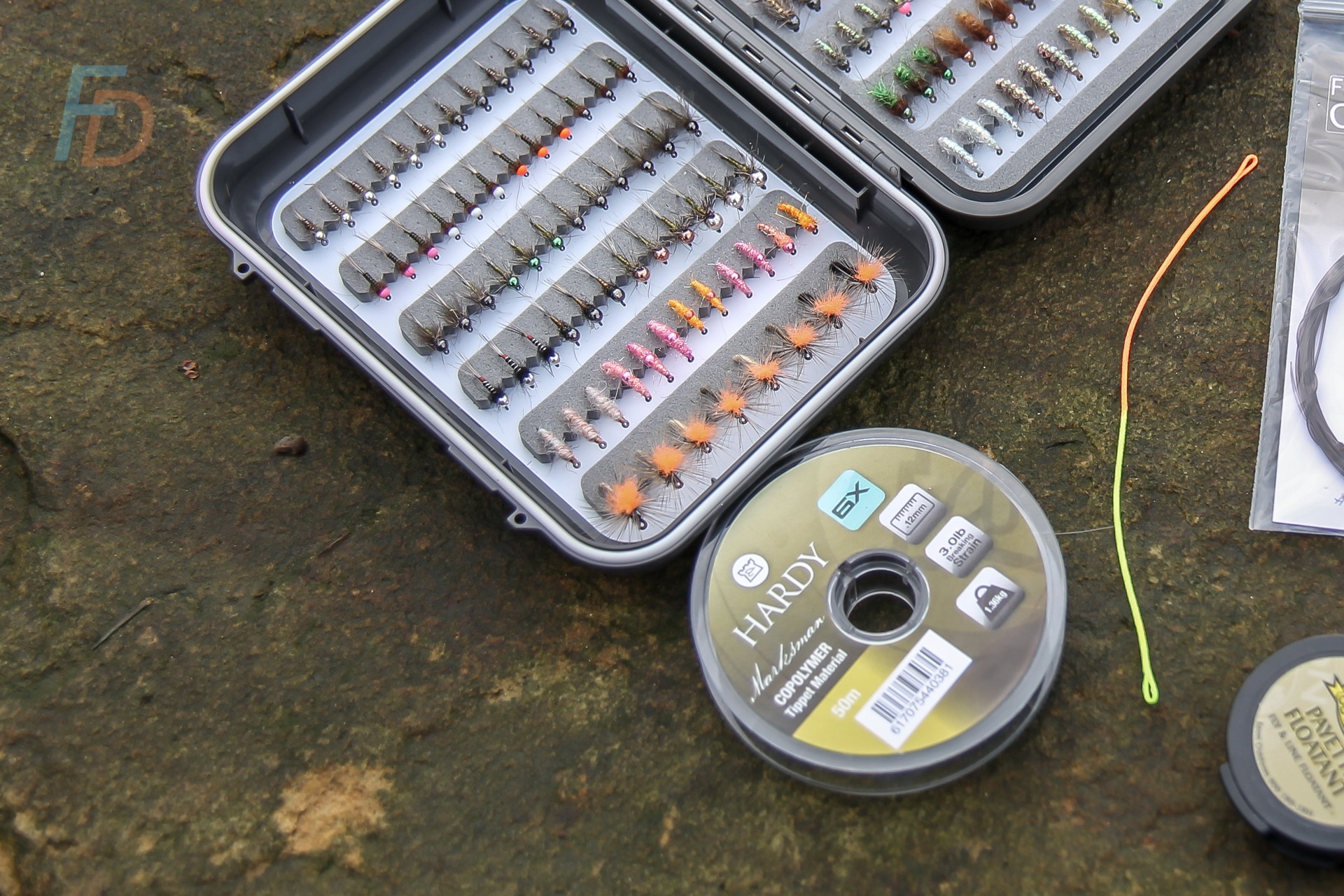
50-m Spool of Hardy Copolymer Fly Fishing Tippet
Relative to other fishing lines of comparable diameter, that usually makes tippet more expensive “per foot” – even before the (often) higher ticket price is taken into account.
However, to be fair, fly fishing tippet often has very particular qualities of texture, density and stiffness designed into it.
Those characteristics are informed by what fly fishers say they want out of their tippet materials.
Batches of tippet material will, necessarily, be smaller than the production runs of reel lines made for styles of fishing which have more participants (like bass fishing around the world and bait fishing in the UK).
That being said, if you know the exact qualities you are looking for (and are prepared to experiment), it can be possible to find 50 to 100m spools of “reel line” or bait fishing "hook-length line" that are very affordable – and provide excellent performance when used for tippets.
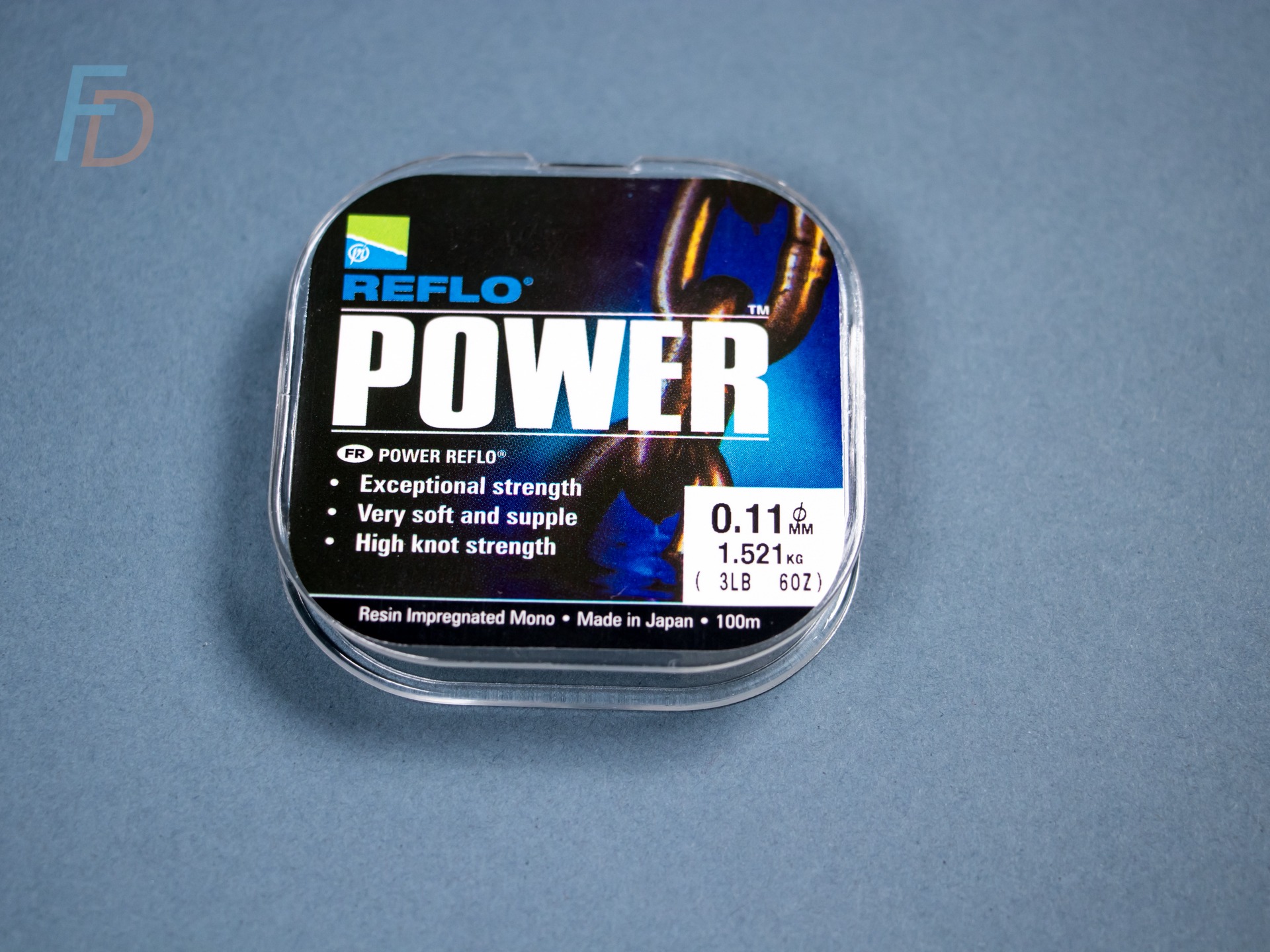
A very good example of 100-m spool of affordable (yet high performance) bait-fishing line that makes very good fly fishing tippet
What is Fly Fishing Tippet Made From?
The two most common materials for fly fishing tippet are nylon/copolymer formulations and fluorocarbon.
Fluorocarbon
In thicker diameters, the greater density of fluorocarbon tends to make it sink. However, in very fine diameters (say, less than 6x) the slightly water-repellent nature of the material can – paradoxically - make it more difficult to sink fluorocarbon.
Nylon/Copolymer
Nylon and nylon “copolymer” formulations tend to be a bit softer and more supple than fluorocarbon – and it is usually easier to tie secure knots in fine nylon and nylon copolymer (fluorocarbon tends to be more slippery and can also have a tendency to cut into itself – making knots more brittle – in finer diameters).
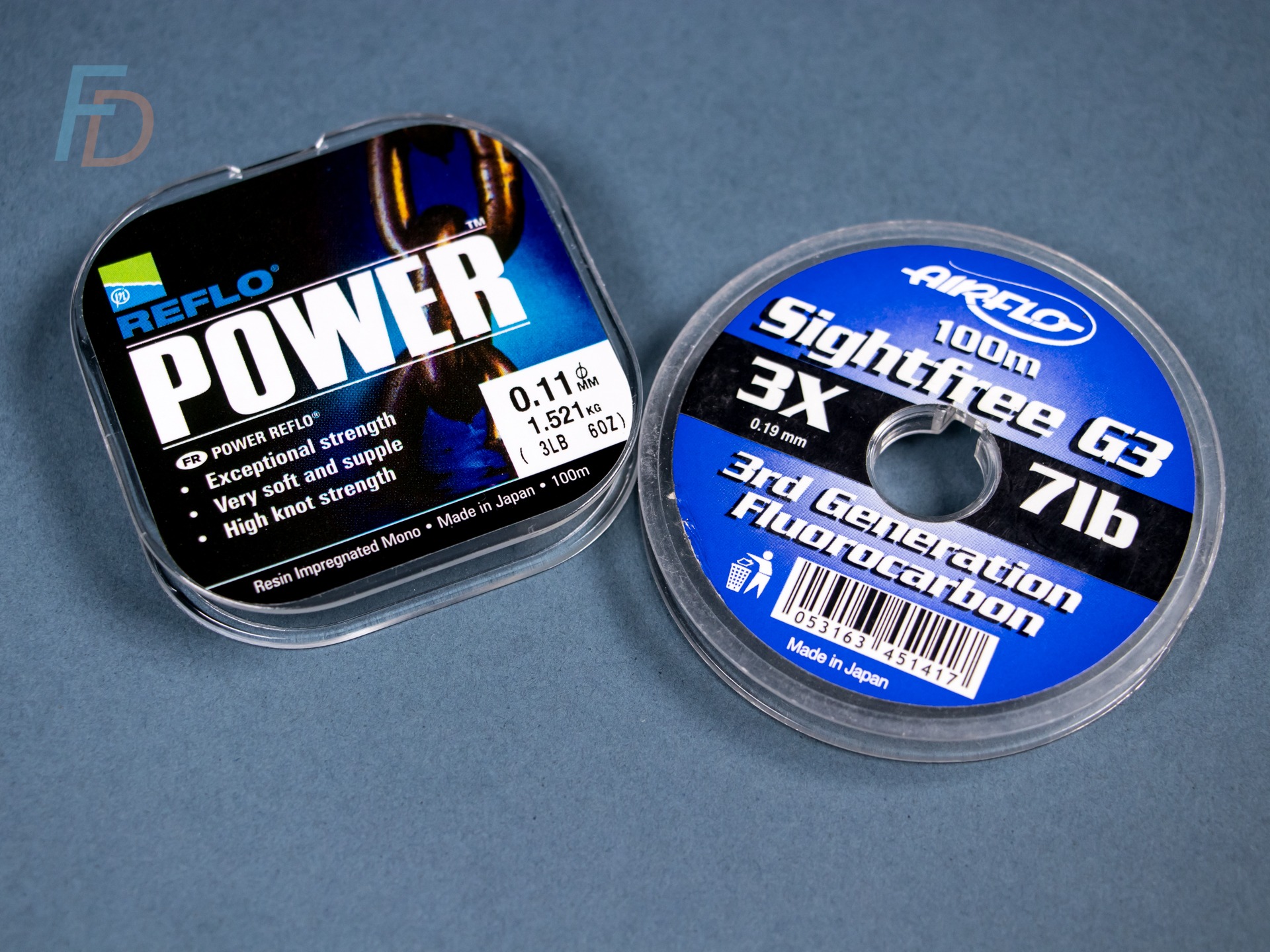
Example Spools of copolymer (left) and fluorocarbon (right)
Choosing Tippet Material
The slightly wiry texture, density and generally good strength for its diameter, can make fluorocarbon very effective as a tippet. For heavy saltwater or any predator applications, super heavy (50lb-plus) breaking strain fluorocarbon can be used as “bite proof” trace material as a very specialised component of your fly fishing tippet. On the flip side, the softer nature of nylon can create different opportunities.
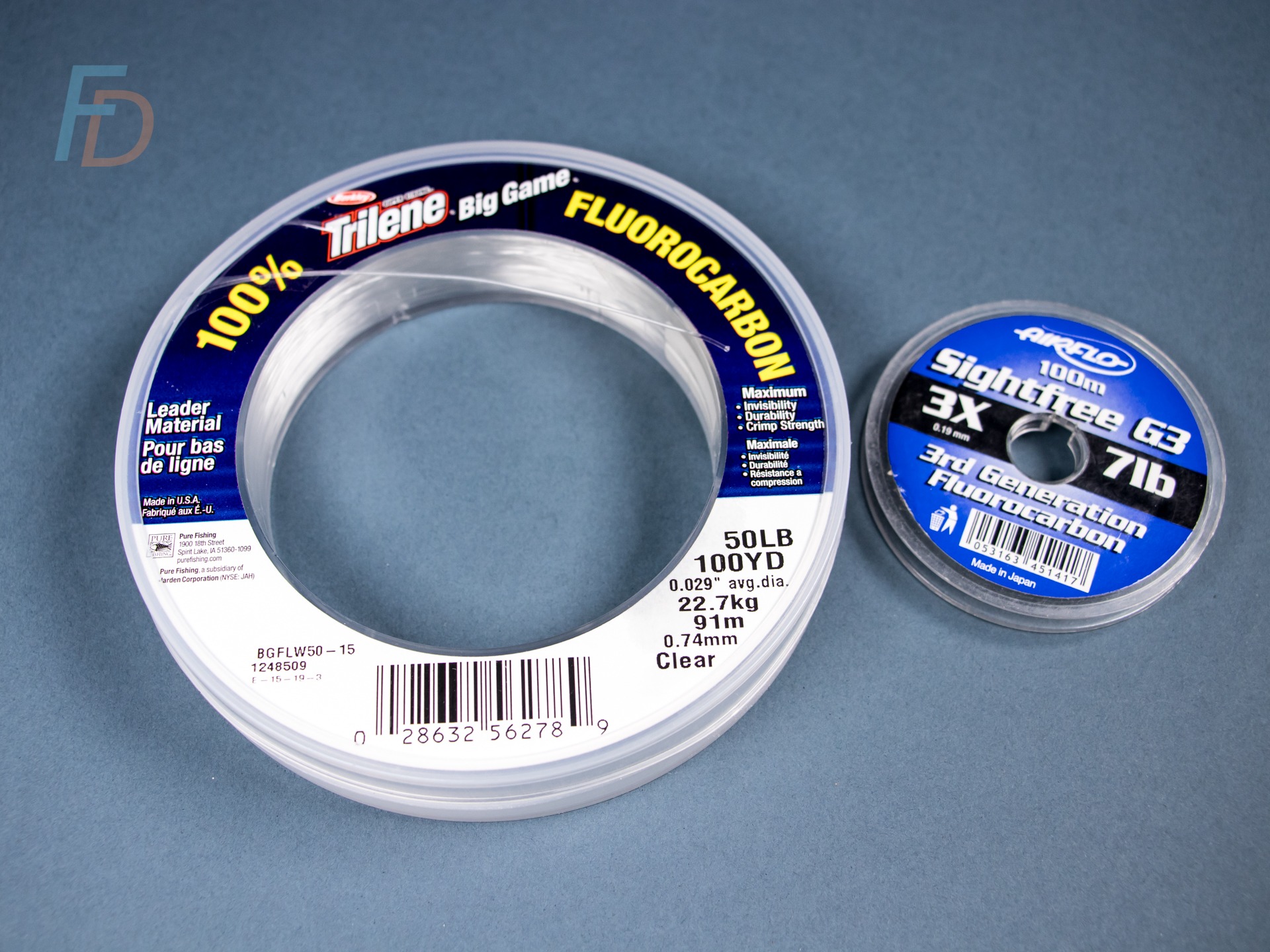
Bringing out the big guns: 50lb Fluorocarbon for big-game applications!
The choice mainly comes down to a combination of stiffness (for a particular kind of turnover), suppleness (for fly movement) and then how easy the material is to sink/make float – depending on what you need your fly to do.
One further consideration is that nylon/copolymer will degrade MUCH more quickly in sunlight than fluorocarbon (which has a half life of tens of thousands of years in UV light).
For multi-fly rigs that might get snagged in trees (and leave one hook trailing), you might consider the faster breakdown of copolymer as a way to avoid accidental deaths of wildlife, birds and bats.
Best Fly Fishing Tippet Length
Changing the length of the tippet can create different effects. This can help you adapt to the conditions that you are fishing in – and allow you to alter your presentation. When it is windy and you want to “punch” a fly through or into the wind, having a shorter tippet helps.
Alternatively, making your tippet longer might reduce your accuracy a bit – but it can help to create softer delivery of your fly. Longer tippet can also create slack that, when dry fly fishing, could help to combat drag.
Just be careful about making the tippet so short that it unpredictably “kicks” the fly left or right because there is too much power being transmitted down to the fly. Similarly, once the tippet gets too long, you’ll struggle to achieve turnover and accuracy.
Take-Home Points on the What is Fly Fishing Tippet? Question
Let me know in the comments if I missed anything (or even if you just found this helpful). Your input helps us keep on track and make sure we're providing the information you want.
Paul
